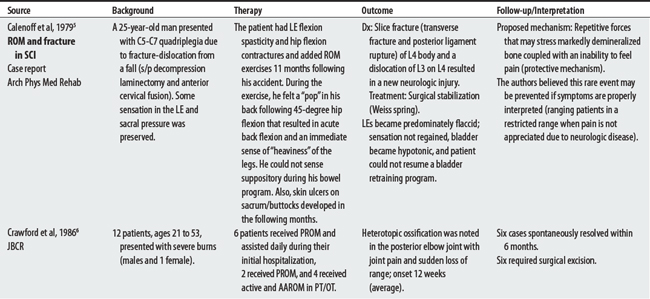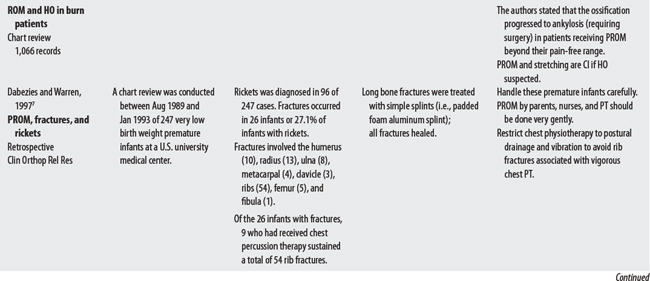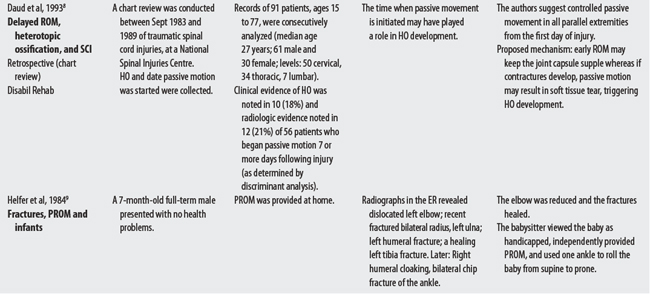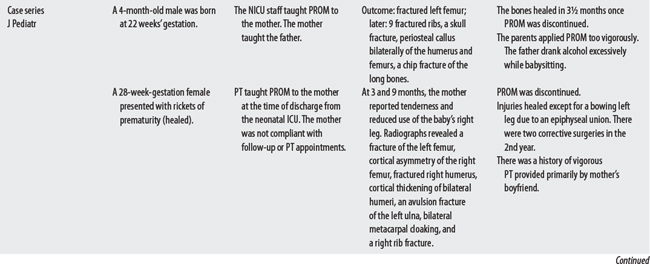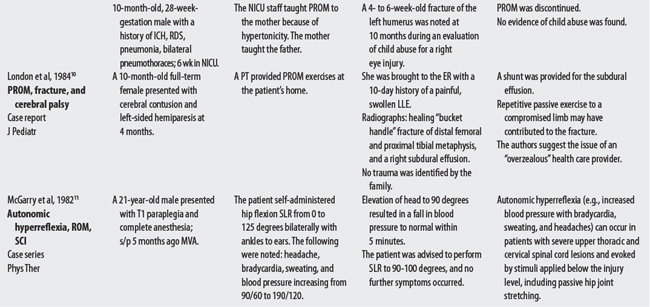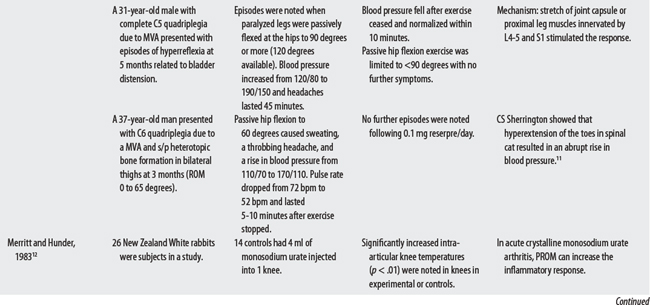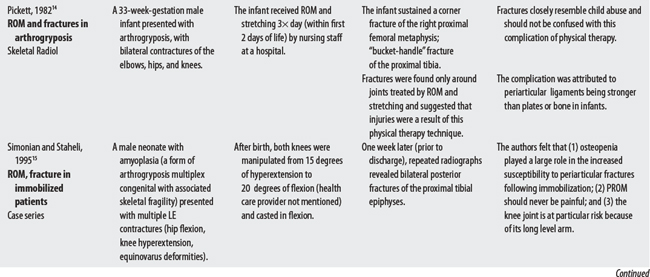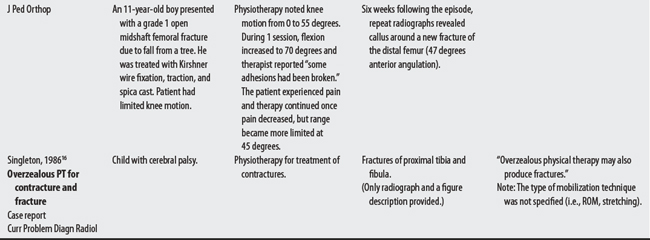Chapter 13 Flexibility Exercises
OVERVIEW.
PROM is motion produced by an external force, without voluntary contraction, and within an unrestricted portion of a joint.1 One of its chief purposes is to maintain (not increase) joint mobility.
SUMMARY: CONTRAINDICATIONS AND PRECAUTIONS.
Four sources list a common contraindication.1–4 PROM is contraindicated if it disrupts healing (i.e., condition intensifies). Complications from PROM are reported below and include (1) fractures/dislocations—in often fragile bone, (2) autonomic dysreflexia—in spinal cord patients, and (3) heterotopic ossification. In addition, overly vigorous techniques may have led to fractures in cases where family members or lay people administer PROM to infants.
1 Monroe LG. Motion restrictions. In Kisner C, Colby LA, editors: Therapeutic exercise: Foundations and techniques, ed 3, Philadelphia: FA Davis, 1996.
2 Tan JC. Practical manual of physical medicine and rehabilitation: Diagnostics, therapeutics, and basic problems. St Louis: Mosby, 1998.
3 Brody LT. Mobility impairment. In: Hall CM, Brody LT, editors. Therapeutic exercise: moving toward function. Philadelphia: Lippincott Williams & Wilkins, 2005.
4 Pierson FM, Fairchild SL. Principles and techniques of patient care, ed 3. Philadelphia: Saunders, 2002.
5 Calenoff L, Geimer PC, Rosen JS. Lumbar fracture-dislocation related to range of motion exercises. Arch Phys Med Rehab. 1979;60(4):183-184.
6 Crawford CM, Varghese G, Mani MM, et al. Heterotopic ossification: are range of motion exercises contraindicated? J Burn Care Rehabil. 1986;7(4):323-327.
7 Dabezies EJ, Warren PD. Fractures in very low birth weight infants with rickets. Clin Orthop Rel Res. 1997;335:233-239.
8 Daud O, Sett P, Burr RG, et al. The relationship of heterotopic ossification to passive movements in paraplegic patients. Disabil Rehab. 1993;15(3):114-118.
9 Helfer RE, Scheurer SL, Alexander R, et al. Trauma to the bones of small infants from passive exercise: a factor in the etiology of child abuse. J Pediatr. 1984;104(1):47-50.
10 London R, Noronha PA, Levy HB. Bone trauma caused by passive exercise. J Pediatr. 1984;105(1):172-173.
11 McGarry J, Woolsey RM, Thompson CW. Autonomic hyperreflexia following passive stretching to the hip joint. Phys Ther. 1982;62(1):30-31.
12 Merritt JL, Hunder GG. Passive range of motion, not isometric exercise, amplifies acute urate synovitis. Arch Phys Med Rehab. 1983;64(3):130-131.
13 Merkx MA, Freihofer HPM. Fracture of costochondral graft in temporo-mandibular joint reconstructive surgery: an unexpected complication. Int J Oral Maxillofac. 1995;24:142-144.
14 Pickett WJIII, Johnson JF, Enzenauer RW. Case report 192. Skeletal Radiol. 1982;8:85-86.
15 Simonian PT, Staheli LT. Periarticular fractures after manipulation for knee contractures in children. J Pediatr Orthop. 1995;15(3):288-291.
16 Singleton EB. Intentional and unintentional abuse of infants and children. Curr Problem Diag Radiol. 1986;15:277-280.
17 Malpractice verdicts, settlements, and experts. February 1998; p. 40
Stay updated, free articles. Join our Telegram channel

Full access? Get Clinical Tree



